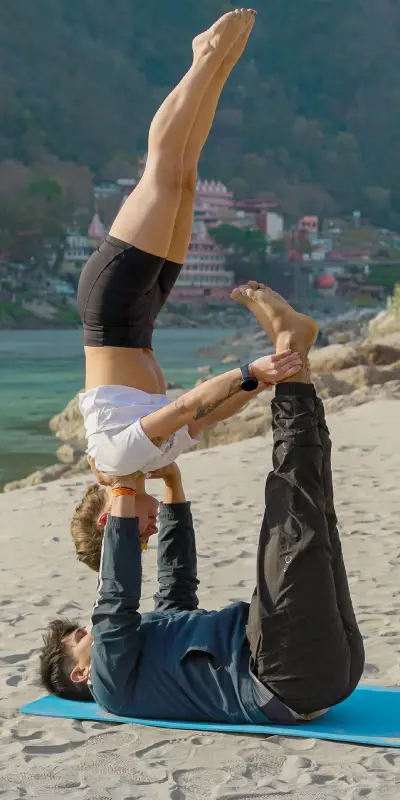
Get A Free Quote

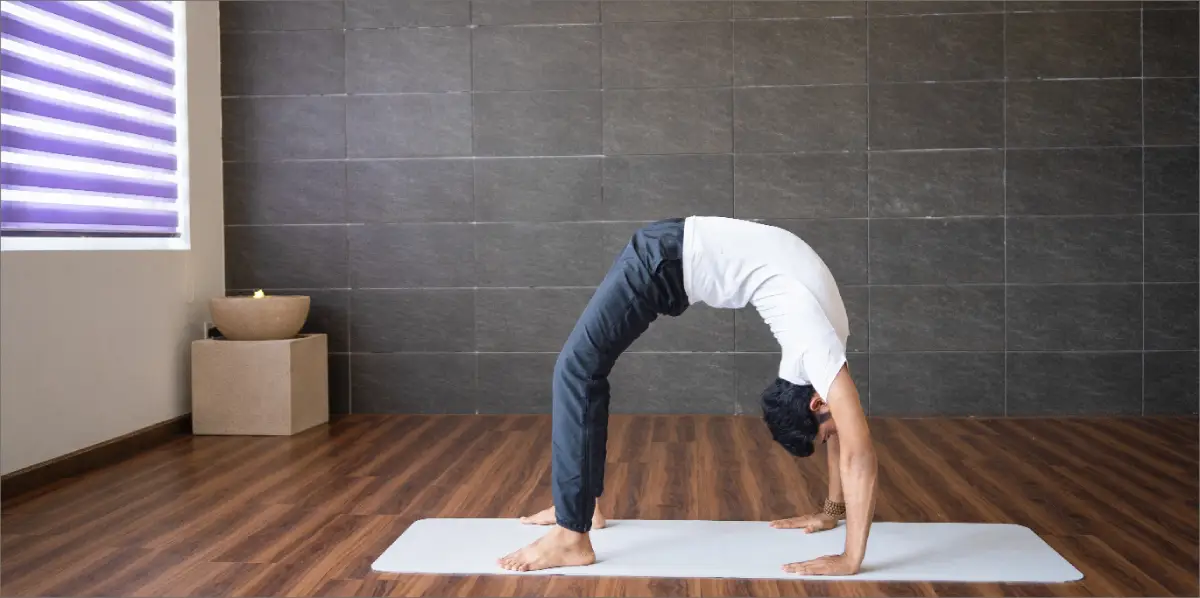
Chakrasana, sometimes referred to as the Wheel Pose is a well-known yoga posture. The Sanskrit terms "chakra," which denotes a wheel or circle, and "asana," which denotes a position or posture, are the source of the word's name. The Sanskrit term Urdhya Dhanurasana is another name often used for this asana. This dynamic and energizing backbend mimics the graceful form of a wheel or bridge. The person performing Chakrasana starts by lying on their back and lifting their entire body off the ground while pressing their hands and feet firmly into the ground to produce a graceful arch. This position requires balance, strength, and flexibility, as well as the use of several different muscle groups, including the arms, legs, core, and back. Beyond its physical advantages, Chakrasana serves as a significant yoga pose because of how it affects the chakras, or subtle bodies and energy centres. There are seven main chakras along the spine, each connected with distinct qualities and functions, according to yogic philosophy. The Anahata (heart) and Vishuddhi (throat) chakras, in particular, are thought to be stimulated and activated by Chakrasana.
The Wheel Pose, or Chakrasana, provides advantages for one's body, mind, and spirit. Physically, it strengthens the back and core muscles and develops general body flexibility while also enhancing spinal flexibility. It stimulates the endocrine system to maintain hormonal balance while stretching and opening the hip flexors, shoulders, and chest. Chakrasana helps improve mental clarity, releases pent-up stress and emotions, and fosters a feeling of empowerment. It increases self-esteem and self-confidence. In the spiritual sense, Chakrasana stimulates the chakras, especially the heart and throat chakras, which promote harmony, love, compassion, and connection. It is thought to awaken Kundalini energy, promoting spiritual development. When Chakrasana is practised correctly and under instruction, people can benefit from its holistic properties, which enhance their bodily, mental, and spiritual well-being.
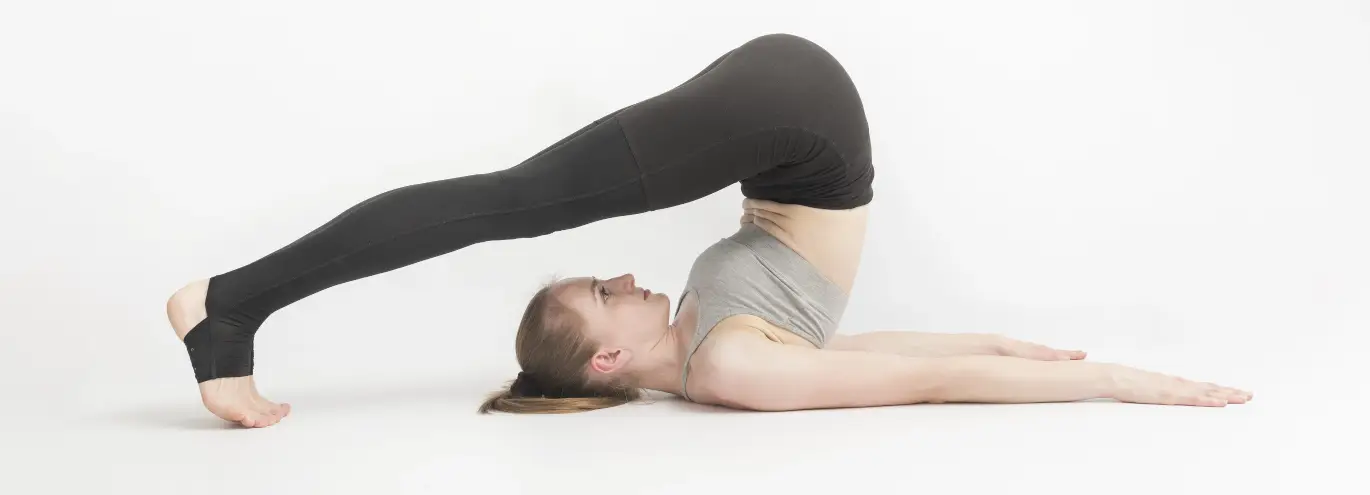
Chakrasana can be practised to achieve substantial advantages for the body, mind, and spirit. This powerful asana improves general health and vitality by helping one gain physical strength, flexibility, and balance. Chakrasana practice is more than just a physical activity; it is a chance to go into the depths of your being and discover your inner strength and dedication. With regular practice, this pose has the potential to develop into a transforming tool for self-discovery, fostering a stronger bond between your body, mind, and spirit. The following are some major advantages of including Chakrasana in your yoga practice:
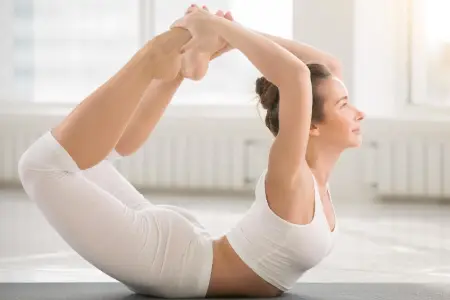
Chakrasana gives the spine a significant stretch, promoting flexibility, better posture, and ideal alignment. Through deep spinal extension and release along the whole length of the spine, this dynamic pose fosters flexibility and mobility. Through regular exercise, the spine becomes more flexible, improving its ability to maintain good alignment and posture throughout daily tasks. Chakrasana develops a strong, upright posture by lengthening and energizing the spine. This helps to relieve stress and discomfort and cultivates an elegant and balanced physical presence.
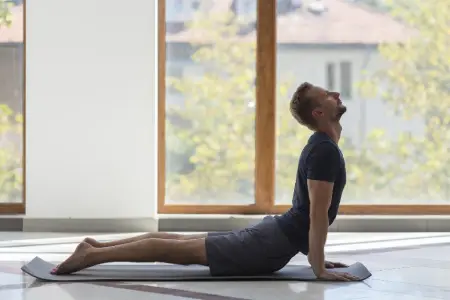
Chakrasana actively engages and strengthens a variety of muscle groups, such as the arms, legs, back, and core, which results in a noticeable increase in muscular strength and stability. These important muscle groups must be engaged in order to acquire and maintain the arching position in this dynamic pose. Chakrasana helps create a stronger, healthier back, a solid core, and toned arms and legs through frequent practice. The coordinated use of these muscle groups also promotes a feeling of better physical strength, balance, and stability.
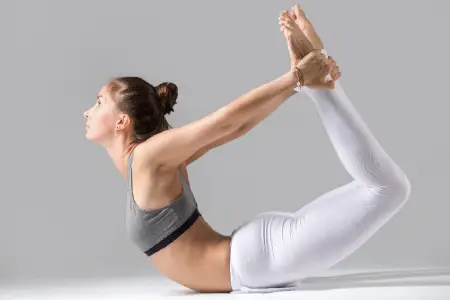
Chakrasana promotes a wide-ranging deep stretch in a number of body parts, including the chest, shoulders, hip flexors, and quadriceps, which improves overall body flexibility. Individuals can get greater flexibility in these vital regions by performing Chakrasana on a daily basis, which can improve posture, make movement easier, and promote a person's sense of physical freedom. A more flexible and agile body benefits from the stretching and opening of these muscle groups during Chakrasana, promoting general well-being and fluidity in daily activities.
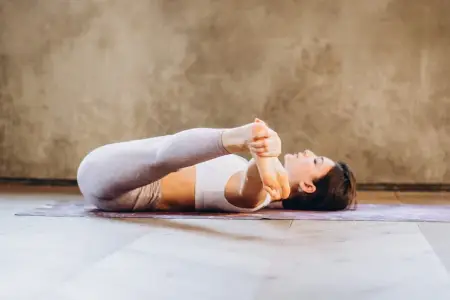
Chakrasana stimulates the body's circulation, engages the neurological system, and awakens the body, resulting in increased energy and a reenergized sense of vitality. Every cell in the body is awakened and given new life by this active posture, which encourages an increase in life force energy. Chakrasana revitalizes the entire being, giving a consistent surge of energy and vitality by increasing the nervous system's performance and promoting circulation. Practitioners often claim to have more energy, more endurance, and feeling better overall as a result.
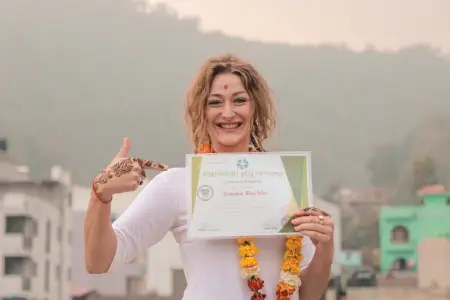
Chakrasana acts as a catalyst for opening and balancing the chakras, allowing the life force, or prana, to circulate freely throughout the body. By energizing and balancing the energy centres, this posture promotes open prana flow, which nourishes and reinvigorates the entire body. Chakrasana encourages a harmonic fusion of the physical, mental, and spiritual components, generating a profound sense of well-being and inner harmony. It does this by awaking and balancing the chakras. Performing Chakrasana improves vigour, clarity, and general energetic equilibrium by serving as an outlet for the prana's transforming potential.

Because it requires strength, balance, and unwavering mental attention, mastering Chakrasana cultivates a strong sense of self-confidence and self-esteem. Practitioners get a strong sense of confidence in their abilities by conquering physical difficulties and achieving stability in this dynamic position, fostering a good self-image and an empowered mindset. The transformational power of commitment, tenacity, and unflinching faith in one's own skills is demonstrated through Chakrasana, which leads to increased self-assurance and a heightened sense of self-worth.
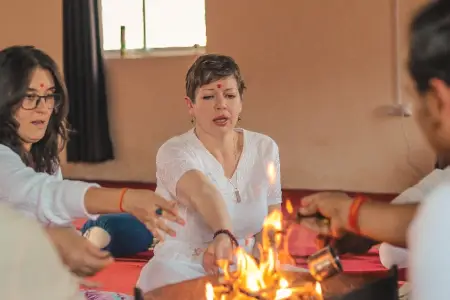
The chest and heart centres undergo transformation by Chakrasana, which cultivates a great sense of openness, love, and compassion for oneself and others. The chest opens and expands in this powerful backbend position, enabling the heart space to enlarge and radiate its energy. Practitioners thus frequently report having a greater ability for self-acceptance, empathy, and connection, both within and outside of their interpersonal relationships. Chakrasana is a powerful symbol of the heart's limitless capacity to receive and spread love and compassion.

Chakrasana has a strong connection to the Kundalini energy awakening, which results in deep inner connection, spiritual transformation, and heightened levels of consciousness. By acting as a catalyst for the awakening and ascension of the dormant Kundalini energy, this dynamic and potent position enables the energy to freely flow through the chakras, the body's subtle energy centres. Practitioners of Kundalini might notice a significant expansion of awareness, an improved spiritual journey, and a greater comprehension of their actual identity and purpose as the energy awakens.
Start with some warm-up exercises. To prepare your body, begin with a warm-up practice. Stretch the spine, hip flexors, shoulders, and chest in particular. Include movements like backbends, shoulder rolls, and chest stretches.
Lie on your back with your knees bent and your feet hip-width apart. Your feet should rest flat on the ground, just in front of your sitting bones. With your hands down, your arms should be at your sides.
Place your hands and feet on the ground next to your head with your fingers pointed in the direction of your shoulders. Bend your elbows. Your fingers ought to be pointing in the direction of your feet. Set your hands slightly farther apart than shoulder width.
Draw your navel toward your spine to activate the muscles in your core. This will support your back during the pose and safeguard your lower spine.
Lift your hips off the ground by applying pressure with your hands and feet. Lift your tailbone first, then gradually raise your hips until your chest is off the floor.
Straighten your arms as far as they can go, raising your upper torso and chest higher off the ground. Maintain a parallel stance between your thighs and consciously contract your leg muscles.
Let go of any tightness in your neck and let your head rest loosely. Do not tuck your chin into your chest to prevent aggravating your neck.
Take a few deep breaths and hold the position for however long it feels comfortable to you. Keep your body in good alignment, stacking your wrists and shoulders and lining up your knees and ankles.
To come out of the position, slowly lower your body, starting with your chest, then your hips, and then let go of your hands and lie back down.
After completing Chakrasana, take time to unwind. You can take a few deep breaths while lying flat on your back with your eyes closed.
Chakrasana, commonly referred to as the Wheel Pose, is an intricate yoga asana that necessitates careful execution and necessary safety measures to be practised effectively. If you are uncertain about your ability to perform this pose safely, it is advisable to seek guidance and support from a certified yoga instructor. Here are several precautions to bear in mind while engaging in the practice of Chakrasana:
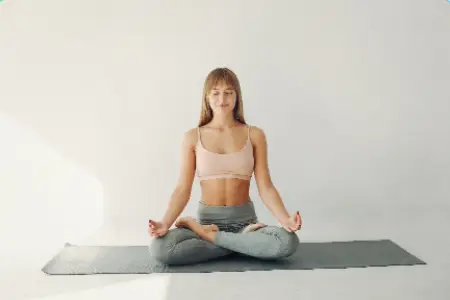
It is always vital to thoroughly warm up your body before performing Chakrasana. Perform a series of gentle stretches that concentrate on the hip flexors, shoulders, and back. These warm-up exercises prepare and loosen the muscles so they are better able to adapt to the demands of the position. Spending time warming up these particular regions improves flexibility and lowers the possibility of strain or injury while performing Chakrasana.
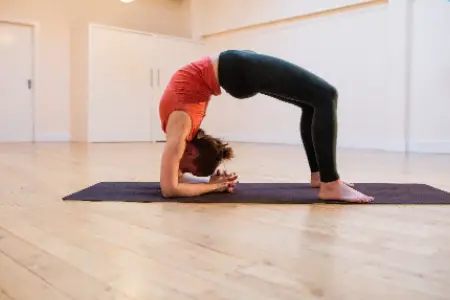
It is important to pay close attention to the signals from your body as you perform Chakrasana. It is of the utmost importance that you acknowledge any pain or discomfort you may be feeling and modify as necessary. Pushing yourself over your comfort zone may lead to injuries. Instead, put your health first and adjust the position as necessary for a secure and comfortable practice. Keep in mind that every person's body is different, so what may work for others may not be appropriate for you.
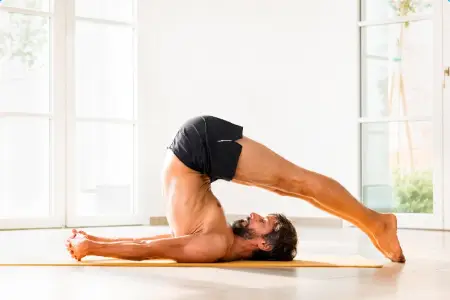
Chakrasana involves a challenging backbend, thus it is important to approach it gradually. Beginners are advised to begin with easier backbends like Cobra Pose (Bhujangasana) or Bridge Pose (Setu Bandhasana) to strengthen and stretch their backs. These introductory positions act as stepping stones, enabling your body to progressively adjust and get ready for Chakrasana's more in-depth expression. Before moving on to harder poses, concentrate on perfecting the alignment and engagement in these basic backbends.
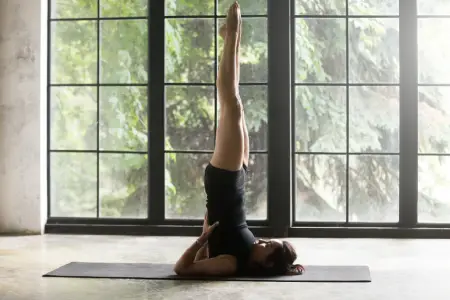
You must focus on certain key elements in order to achieve perfect alignment throughout the posture. Start by standing with your feet hip-width apart and parallel to one another. This base provides the position with a secure foundation. Additionally, pay attention to evenly spreading your weight between your hands and feet to avoid putting undue strain on any one location. Instead of sagging or sinking into the shoulders, focus on lifting the chest upward to give the upper body a feeling of spaciousness.
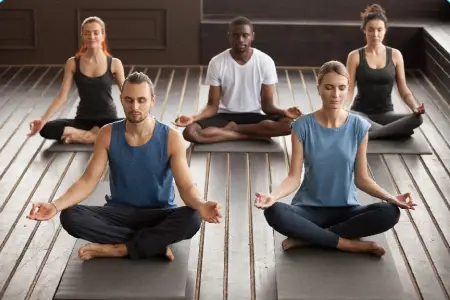
It is vital to include mild forward folds or twists in your post-practice routine to help the spine regain stability and relieve any potential tension or discomfort following Chakrasana. The backbend is balanced through those complimentary exercises, which encourage harmony and balance throughout the body. Gentle forward folds encourage a sense of grounding and aid in the release of any pent-up tension in the back muscles. Similar to gentle twists, gentle twists massage the spine gently, assisting in the return of its natural alignment.
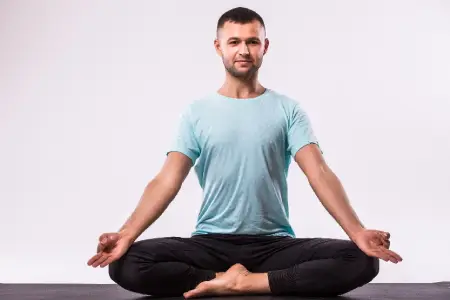
It is crucial to take regular, deep breaths while performing the posture. It is important that you refrain from gasping for air or straining yourself too much. Instead, concentrate on maintaining a regular, rhythmic breathing pattern all throughout the asana. Deep breathing helps with steadiness and alertness while also promoting relaxation and oxygenating the body. You can develop a sense of calm and focus by putting your breathing first. This will make the posture safer and more enjoyable for you.

There are tools available to help you with your practice if you have trouble performing Chakrasana. Consider using bolsters or blocks as props to provide support and help the pose develop gradually. To gradually build up the posture, place them beneath your hands or behind you. These accessories can provide stability and let you explore the posture more comfortably and easily. In order to obtain the proper level of support for your particular needs, keep in mind to pay attention to your body and change the props accordingly.
The challenging backbend known as Chakrasana, or the Wheel Pose, is available in a variety of postures to accommodate different levels of flexibility and strength. It is important to approach these adjustments and variants within your own comfort range and under the direction of a certified yoga instructor. Their knowledge will guarantee that you keep the right alignment and reduce the chance of any potential injury. Here are some alterations and variations you might want to investigate:
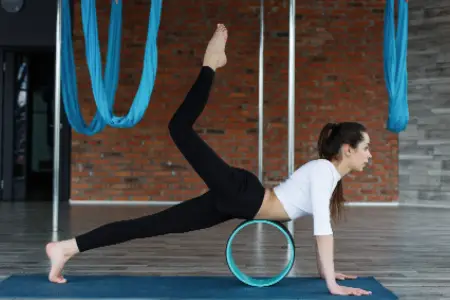
Before attempting Chakrasana, practice Bridge Pose (Setu Bandhasana) to strengthen and stretch your back. Keeping your knees bowed and feet flat on the mat, lie on your back. For support, place a yoga block or bolster beneath your sacrum, which is the bony region at the base of your spine. Maintaining the block or bolster in place, lift your hips and chest while exerting pressure on your feet and shoulders. This altered version aids you in progressively opening your back and chest.
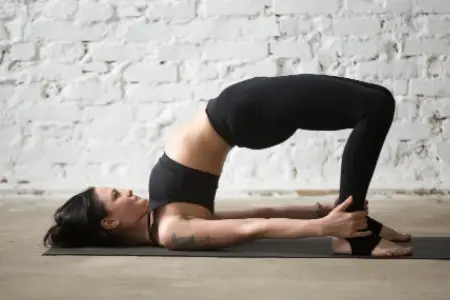
Start in Bridge Pose with your hands clasped together beneath your back to alter Chakrasana. As you rise your hips and chest, entwine your fingers and firmly press them into the mat. This alteration makes it easier for beginners to practice the backbend since it provides more stability and support. You can progressively develop strength and confidence while keeping appropriate alignment by using the clasped hands as a base. To assist in lifting your hips and chest, keep your legs and core engaged.
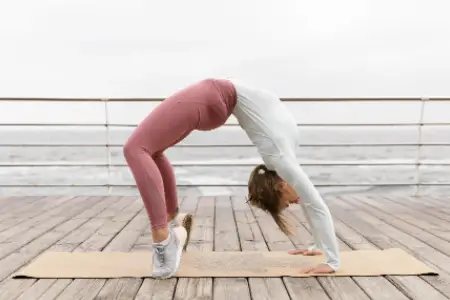
Lie on your back with your feet hip-width apart, your knees bent, and your knees flat on the mat. With your fingers pointed toward your shoulders, position your hands next to your ears. Your elbows should remain at shoulder width. Lifting your head, shoulders, and hips off the floor, you come into a mild backbend while you press your hands and feet firmly into the mat. This altered variation still strengthens the back and shoulders while lessening the pose's intensity.

On the mat, place two yoga blocks shoulder-width apart, one on either side of your head. Reach your arms upwards and lay your hands on the blocks while lying on your back with your knees bent and your feet flat on the mat. In order to fully move into Chakrasana, press through your hands and feet while lifting your hips and chest. The blocks add more stability and support while assisting with pose maintenance.

Start by assuming the full expression of Chakrasana. Next, while maintaining balance with your other hand, lift one hand off the mat and extend it upwards. Keep looking forward or at the extended hand. The emphasis of this variant is on strengthening the supporting arm and shoulder while testing your balance. It gives you a chance to develop your practice and discover your body's capabilities. However, it is important to go about it attentively and gently, and if necessary, get advice from a certified yoga instructor.

Shift into Urdhva Dhanurasana (Upward Facing Bow Pose) from Chakrasana. While maintaining your hands and feet firmly planted, lower your head and upper torso toward the mat. Press through your hands to lift your head and upper body into Urdhva Dhanurasana after your head and hands have touched the mat. The backbend is deepened and your arms, shoulders, and legs are strengthened thanks to this advanced transition.

From Chakrasana in its full expression, crouch down, bend your knees, and move your hands slowly toward your feet until you are in a forearm stand position. Bending at the knees and extending your feet up towards your head, let your legs fall back behind you. This variation calls for advanced flexibility, strength, and balance as it combines Chakrasana with the inversion and deep backbend of Scorpion Pose (Vrischikasana).

Start with the full expression of Chakrasana. Put one leg straight up and toward the ceiling from there. With the knee bent and the foot crossing your shoulder, start lowering the leg towards your head. You can help guide the leg by using your hands. This variation tests your balance and shoulder mobility while improving hip and hamstring flexibility. It gives the pose a new depth and gives you the chance to learn more about your body's potential and develop your practice.

Start with the full expression of Chakrasana. Next, support your lower back or sacrum by placing one hand there. Reaching through the fingertips, raise the opposing arm off the mat and raise it in the air. Your core stability, balance, and shoulder strength will be put through additional stress with this version. You can deepen your practice and test the boundaries of your body by including this variation. Keep in mind to maintain good alignment and, if necessary, get advice from a certified yoga instructor.
When practising yoga, modifications and props are extremely important, especially for people who have physical limitations or restricted flexibility. They can assist individuals in exploring the advantages of various poses safely, comfortably, and within the bounds of their physical capabilities. It is vital to approach the exercise mindfully and with respect for the body, enhancing it and making it more accessible by employing props and adaptations. A certified yoga instructor can provide insightful advice on the best adjustments and props to use according to each individual's unique requirements. Here are some examples of applications for props and modifications:

Yoga blocks are adaptable accessories that offer stability and support. They can be used to bring the floor closer to the practitioner in postures like Chakrasana, relieving stress on the wrists, shoulders, and back. In order to raise the floor and make it more accessible for people with limited flexibility, blocks can also be positioned beneath the hands.

When practising yoga, bolsters and blankets provide assistance and comfort. In Chakrasana, they can be used to offer extra support and lessen the force of the backbend by putting them under the back, hips, or head. For practitioners with lower back problems or restricted spinal flexibility, bolsters can help maintain good posture and reduce strain.

Chakrasana practised against a wall can provide one a sense of security and help one stay in alignment. People who are stiff or have a fear of falling can lean on the wall for support. They can drop into the position while moving their hands down the wall, using the wall as a support and guidance for their backbend.

Yoga straps can help you extend your reach and become more flexible. To help preserve the alignment of the arms and shoulders in Chakrasana, a strap can be wrapped around the arms just above the elbows. With this adaptation, people with restricted shoulder mobility can still benefit from the posture while working their way up to a full expression.
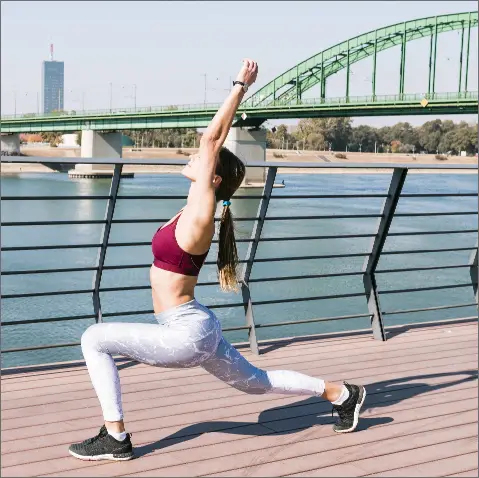
Despite the fact that many yoga postures that require backbends and expansion of the chest and shoulders are similar to one another, each position is distinct and has a different goal in mind. It is crucial to approach these postures with awareness, pay attention to your body, and respect your personal limitations. A certified yoga instructor can help to ensure proper alignment, modifications, and progressions based on your particular requirements and skills by supervising your practice. Let us compare Chakrasana (Wheel Pose) with other comparable yoga postures, emphasizing the similarities, differences, and special advantages of Chakrasana:
Chakrasana and Urdhva Dhanurasana are both deep backbends that strengthen the arms and legs while opening the chest and shoulders.
With the fingers pointing toward the feet in Chakrasana, the hands are put beside the head. In Urdhva Dhanurasana, the hands are positioned behind the ears with the fingers pointing toward the shoulders. While Urdhva Dhanurasana stresses the shoulder joints and upper body power, Chakrasana focuses on the heart chakra and delivers a deeper stretch in the shoulders and chest.
Setu Bandhasana and Chakrasana both incorporate backbends that open the shoulders, strengthen the glutes, and lengthen the hamstrings.
In Setu Bandhasana, the practitioner lies on their back and lifts their hips off the mat to resemble a bridge; in Chakrasana, the practitioner lifts both their hips and chest off the mat to resemble a full backbend. Compared to Setu Bandhasana, Chakrasana delivers a deeper backbend and a more acute shoulder stretch.
Backbending positions like Chakrasana and Kapotasana open the chest, stretch the front body, and improve spinal flexibility. Both postures encourage the body's energy to circulate, which revs up the neurological system and boosts general vitality.
The practitioner of Chakrasana begins by lying on their back and then raises their complete body into a full backbend, putting special emphasis on the chest, shoulders, and spine. Kapotasana focuses on hip opening and quadriceps stretching, beginning in a kneeling position with one leg extended back. Both positions are beneficial for increasing flexibility and posture, but they should only be performed under the supervision of a trained professional.
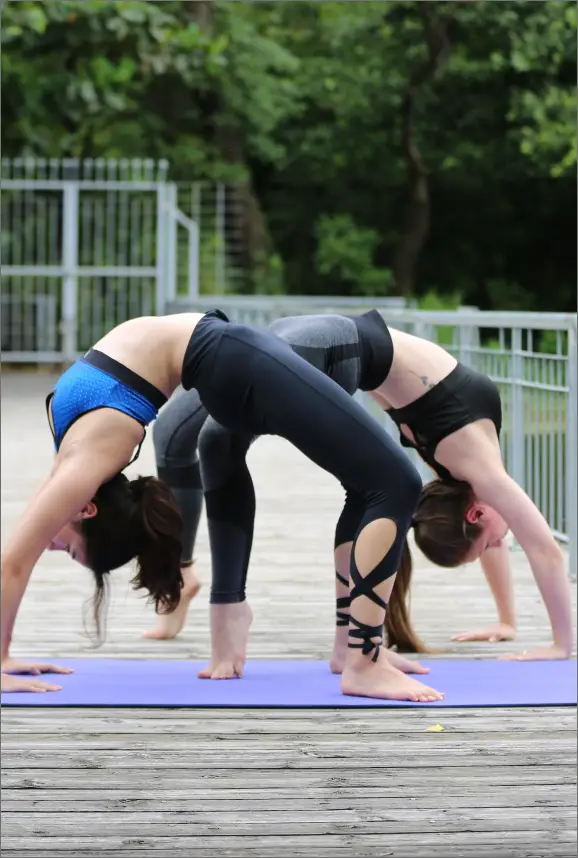
Considering its extensive spiritual legacy, tranquil natural environment, and abundance of ashrams and yoga centres, Rishikesh is known as the "Yoga Capital of the World." Worldwide seekers and practitioners have flocked to Rishikesh to fully immerse themselves in yoga, meditation, and spiritual disciplines. Numerous excellent yoga teacher training courses are available in Rishikesh, and they are designed to meet the requirements of both dedicated learners and aspiring instructors. These courses, which are led by qualified yoga instructors, are intended to give thorough instruction in yoga postures, pranayama, meditation, philosophy, anatomy, teaching techniques, and more.
There are a number of factors to take into account when choosing a yoga teacher training program in Rishikesh. These include ensuring the curriculum corresponds with your interests and offers a thorough learning experience within an acceptable time frame, as well as looking for accreditation and certification by respected organizations like Yoga Alliance. It is essential to look into the credentials and area of specialization of the teaching staff, as well as to read evaluations and student feedback to get a sense of how well-regarded the program is. Finding a program that aligns with your aims and gives the appropriate style or approach to yoga can be aided by looking at the location, amenities, and facilities offered by the training centre as well as by considering personal goals and intentions.
Chakrasana is a powerful and energizing yoga practice that has many physical and energetic advantages. The entire body gets stretched and strengthened, but the back, shoulders, and chest are most benefitted. Chakrasana improves posture while stimulating the nervous system and enhancing spinal flexibility. It also opens the heart chakra, encouraging sentiments of love, compassion, and openness. Chakrasana can be adjusted and changed to fit your degree of flexibility and strength, whether you are a beginner, intermediate, or experienced practitioner.
Chakrasana is a transformational posture that you can adopt to change both your practice and your life. It helps you to approach obstacles with bravery and receptivity. Chakrasana can only be fully realized through patience, commitment, and self-compassion. You will learn about your inner fortitude, resiliency, and infinite potential along the road.
When performing Chakrasana for the first time, be patient and take it slowly. Start with a warm-up approach that emphasizes stretching important body parts. To increase your strength and openness, try the Bridge Pose. When performing Chakrasana, put your hands and feet correctly, engage your core, and elevate your hips and chest gradually. Maintain alignment, take proper breaths, and carefully release from the position. For healthy progress, pay attention to your body, stop if it hurts, seek assistance if you need it, and practice frequently.
Chakrasana has several advantages for the mind and body when practised regularly. It increases energy levels, strengthens muscles all throughout the body, and increases spinal flexibility. By opening the heart, the pose encourages emotional discharge and a feeling of well-being. It also improves balance and attention and aids with digestion. Chakrasana should be practised carefully while respecting one's own limits and seeking advice if necessary.
By increasing spinal alignment, enhancing posture, stretching and strengthening the back muscles, Chakrasana can help to reduce lower back discomfort. Inflammation can be decreased by the pose's ability to decompress the vertebrae and relieve strain on the spinal discs. However, in order to assess whether Chakrasana is appropriate for you and to receive customized modifications or alternate poses as necessary, you must seek advice from a qualified professional, especially if you have pre-existing back concerns.
Alternative poses and modifications are available if Chakrasana is too difficult. Bridge Pose, or Setu Bandhasana, is a good substitute because it also works the shoulders and back. Props in Supported Bridge Pose can lessen the force of the backbend. Supported Fish Pose (Matsyasana) extends the front of the body without putting undue strain on the lower back, and Camel Pose (Ustrasana) gives a milder backbend option. Pay attention to your body, select an alternative that feels comfortable, and speak with a certified yoga instructor for the best results.
Depending on a person's flexibility, strength, consistency, and past yoga experience, Chakrasana can take an individual anywhere from one to three years to fully perfect. The necessary abilities and techniques may take beginners several months or longer to develop. It is important to practice frequently, receive instruction from a good instructor, have patience, and concentrate on making slow, steady development. Instead of focusing on a set schedule, embrace the path of self-discovery and enjoy the process.
Chakrasana is a pose that frequently causes wrist pain, particularly for novices or those with weak wrist muscles. Warming up the wrists, altering hand location, using supports such as props, and incorporating wrist-strengthening exercises are all useful in easing the soreness. Furthermore, if the soreness persists, pay attention to your body and adjust the stance or try another backbend. Individualized support and advice can be obtained by consulting a trained instructor or healthcare expert.
Chakrasana can help increase general flexibility. It gradually increases flexibility in these areas by stretching and opening tight muscles in the hip flexors, shoulders, and chest. Increased joint mobility in the wrists, elbows, and ankles is another benefit of the position. It is important to practice carefully, respect your body's limitations, and steer clear of any pain or discomfort because individual growth can differ. Over time, regular practice combined with additional flexibility drills can result in improved overall flexibility.
Incorporating deep diaphragmatic breathing, sometimes referred to as complete yogic breath, during Chakrasana can improve the practice. Take a big breath in, opening up your chest and bringing your breath into your abdomen as you lift your body. In order to open the ribcage and fill the lungs, keep your breath steady and controlled throughout the pose. As you carefully drop your body back down, exhale. Relaxation, increased oxygen intake, and support for the flow of energy are all facilitated by breathing in time with activity.
Through a number of ways, Chakrasana can help with emotional balance and stress management. It boosts the mind-body connection, increases energy flow, regulates hormones, releases tension and stress, and improves mood by releasing endorphins. Including Chakrasana in a holistic approach to wellness can increase emotional well-being and lower stress, however, individual results may vary. Practice mindfully, get help from a professional when you need it, and pay attention to your body's limitations.
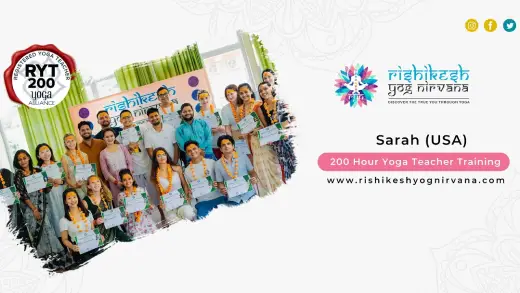
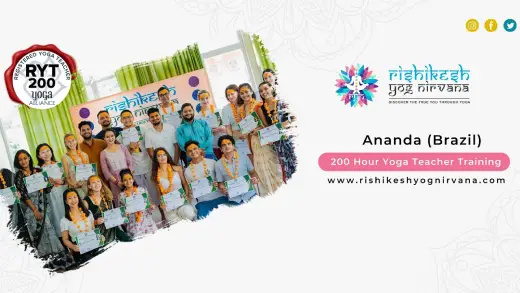
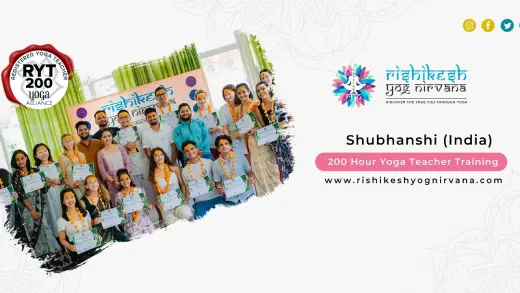


After completing my Yoga Teacher Training course at Rishikesh Yog Nirvana, I can say that I had an exceptional time and gained immense knowledge on both yoga and life.

Rishikesh Yog Nirvana Teacher Training Centre is not just a mere school, but rather a vast universe in its own right. I am thrilled with my decision to pursue the 200-hr teacher training course here.

Strongly recommend this Yoga School as my 100-hr training experience there was a life-changing. Every aspect of the school was perfect, from home-cooked food to the experienced teachers.